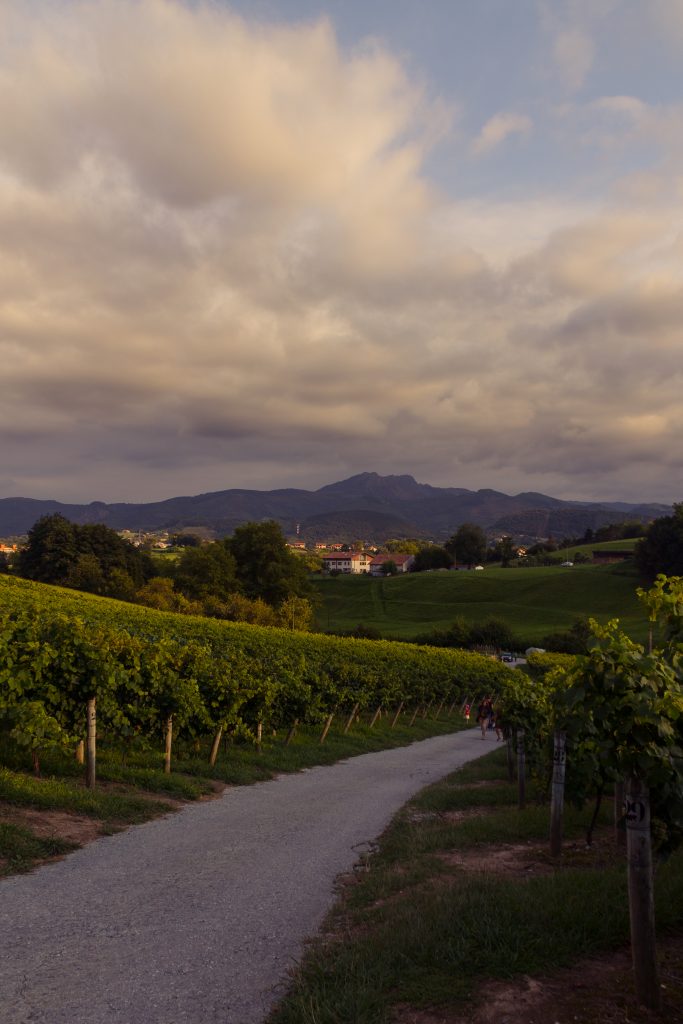Txakoli is a traditional wine from the Basque Country, made from indigenous white grape varieties, although there is a very small production of rosé and red Txakoli. It is a light, crisp wine, noted for its pronounced acidity and low to medium alcohol content, its light yellow colour, its salinity, its fruity aromas and herbal and floral notes.
Behind the great Txakolis is the star grape variety of the Basque Country, the Hondarrabi Zuri. Moreover, it is a wine with strong territorial roots, not only because it is made from native varieties, but also because it bears the mark of the maritime, temperate Atlantic climate.
Txakolis is produced within the framework of three Denominations of Origin, within which various small and medium-sized local family projects are framed.

Climatic and geographical characteristics
Txakoli is produced in the Basque Country, located in the north of Spain on the border with France, facing the Cantabrian Sea. The temperature in this territory is between 8 and 22 degrees Celsius in the months when the vines are growing, with an annual rainfall of between 925 and 1,400 millimetres.
The terrain is mountainous, although not of extreme heights, but rather made up of banks and slopes of varying gradients. The fact that most of the vineyards are located on sloping surfaces facilitates drainage and greater absorption of sunlight, all of which has an impact on the optimum ripening of the grapes.
Most of the vineyards where Txakolis are made are located on sediments with fossil remains of corals or crustaceans, with large mineral components, combined with limestone and clay rocks. This means that the soils are ideal for growing vines, as they also contribute to water drainage.

Txakoli, a wine of local varieties
The main white variety used to make Txakoli is Hondarrabi Zuri, a grape with a small and consistent bunch, which resists very well to the humidity that characterises this area. It is a grape with great natural acidity, which gives freshness, intensity and ageing potential to its wines.
In addition to Hondarrabi Zuri, other authorised varieties are also used to make Txakolí, although to a much lesser extent, such as Hondarrabi Zuri Zerratie (Petit Corbú), Hizkiriota (Gross Manseng), Riesling, Chardonnay and Sauvignon Blanc, among others.
These grapes are often added to provide different nuances of aroma, more freshness, acidity and ageing potential, among other things. The ancestral Hondarrabi Beltza grape is used to make both red and rosé wines.

The Txakoli Denominations of Origin
Txakoli is produced in three Denominations of Origin located in the three Basque provinces of Bizkaia, Gipuzkoa and Araba. The first DO to be created was Getariako Txakolina/Txakoli de Getaria, with 440 hectares in production and 34 bodegas, where the most refreshing Txakolis are made.
Later, in 1994, the Bizkaiko Txakolina/Txakoli de Bizkaia Designation of Origin was created with 425 hectares of vineyards and 38 bodegas. Here the txakolis are distinguished by their complexity. Finally, in 2001 the Denomination of Origin Arabako Txakolina/Txakoli de Alava was created, with only 100 ha planted and 7 wineries.






